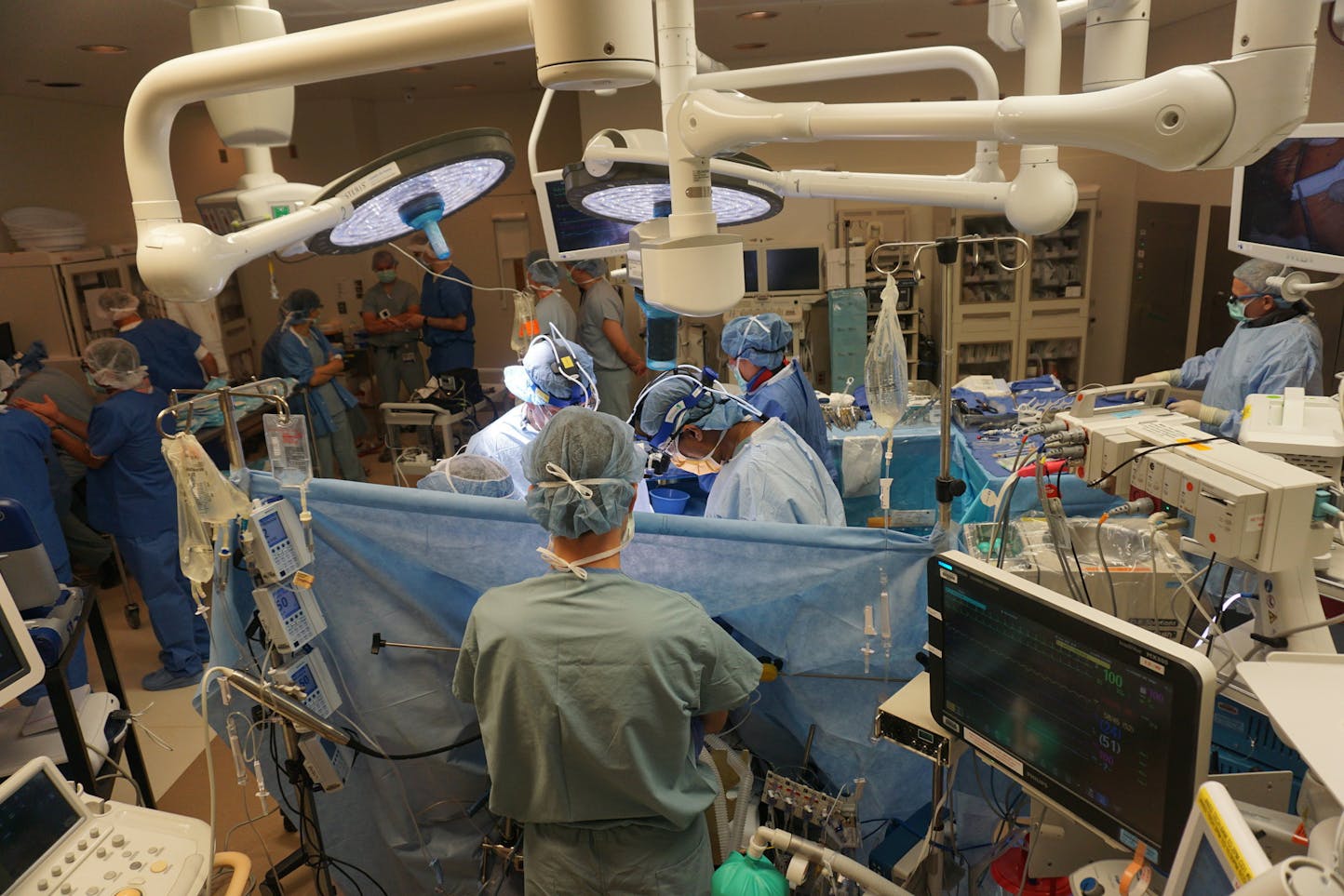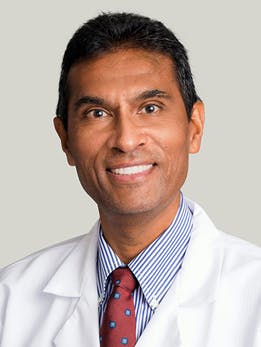New mechanical assist device for advanced heart failure shows promising results during initial evaluation in clinical trial

Six advanced heart failure patients are doing well after surgical teams at the University of Chicago Medicine successfully implanted them with a novel, minimally invasive, mechanical assist system. All six patients suffered from end-stage heart disease and were enrolled in this first-in-human (FIH) clinical trial, approved by the U.S. Food and Drug Administration in late 2015.
This new device known as the NuPulseCV iVAS (intravascular ventricular assist system) was designed to provide long-term support for those with advanced heart failure. For the FIH trial, it is being used to support and assist a patient's failing circulation as he or she waits for a heart transplant. After completion of this trial, the researchers hope to test it in a broader range of heart-failure patients.
"Our hope is that this approach will improve life for patients with advanced heart failure," said Valluvan Jeevanandam, MD, professor and chief of cardiac surgery at the University of Chicago Medicine, who led the surgical team and helped design the device.
The trial's first patient received the device in April, 2016. The next day he was sitting up in bed, eating and telling visitors he felt "pretty good." He walked the hospital hallways the following morning. Four days after his iVAS was implanted, he received a new heart. The second, third and fourth patients spent a few weeks with iVAS support, before receiving heart transplants. All four continue to do well and three have been discharged.
On August 25, Stacey Smith, formerly the owner and manager of a construction company based in Bloomington, IL, became the fifth patient to receive the device.
Smith, age 54, has suffered multiple heart attacks since 2000. He had a triple-bypass operation in 2002, followed in 2005 by implantation of a pacemaker and defibrillator, to regulate his heart rhythm. In 2006 he was part of a clinical trial overseas that used own stem cells to try to restore heart function. This was briefly successful. He had his pacemaker and defibrillator removed later that year. But in 2008, he had another heart attack. He subsequently had a new pacemaker and defibrillator implanted. In 2013, his doctors added a third lead.
The accumulated damage to his heart, however, left him listless. "I usually felt exhausted," he said. "I learned to live with it."
A few months ago, he developed flu-like symptoms that would not go away. "They were hanging on forever," he said. "So one morning I got up early and went to the hospital in Bloomington," where they diagnosed atrial fibrillation, a rapid, irregular heartbeat.
"They told me that had been going on for three or four months," he said. His physicians "shocked me out of it," he added, and arranged for him to come to the University of Chicago, where he was offered the opportunity to enroll in the NuPulse trial.
"My doctors here brought a lot of things to light," Smith said. "I was tickled with the whole idea of the new device. Anything that helps this science and this program, I'm all for it."
The day after his NuPulse pump was implanted, Smith was able to take short walks through the hospital corridors, accompanied by members of his treatment team. He is now on the waiting list for a heart transplant.
Dramatically Different
The NuPulseCV iVAS was designed to provide long-term support and assist a patient's failing circulation. The developers hope it could, over time, be used:
- to stabilize patients until a donor heart becomes available (bridge to transplant),
- to support and rest a heart until it recovers (bridge to recovery), or
- for long-term support (destination therapy).
This novel system does not require major incisions into the chest or open-heart surgery. It is inserted into the left subclavian artery, just below the collar bone, through a two-inch incision. This approach could reduce pain and dramatically shorten rehabilitation.
The vast majority of the system including software, circuit boards and batteries is in the external drive, which weighs about six pounds.
The device can be turned off and back on, and can be easily replaced or removed. "Patients can throw the driver over one shoulder," Jeevanandam said, "and go for a walk." If anything fails, he added, it is easy to replace. "You just turn it off and connect a new one."
Although this initial trial is focused on hospitalized patients awaiting a heart transplant, "we designed the iVAS to help patients get out of the hospital and enjoy life at home," Jeevanandam said.
Filling a need
About 100,000 people each year are diagnosed with advanced heart failure and require some sort of mechanical support. This device was specifically designed as an option for patients not ready to commit to a traditional left-ventricular assist device (LVAD).
"LVADs are great. They prolong life," Jeevanandam said, "but we suspect a lot these patients could benefit from a less-invasive device, particularly one with potentially fewer complications and one they can better control. Due to the long rehabilitation and potential complications, only 35 percent of LVAD patients ever get transplanted," he said. "iVAS may offer a superior alternative."
Initial results
The initial results are very encouraging. The first four patients successfully reached the goal of transplant and "their circulations were well supported," Jeevanandam said. "The iVAS could provide a great option for physicians and patients in treating the vast number of congestive heart failure patients."
The study is funded by NuPulseCV. The NuPulseCV iVAS is an Investigational Device, and is limited by Federal law to investigational use.
Find out more
Watch Dr. Jeevanandam and another patient describe his recovery with NuPulse.
Watch a WGN TV story about the NuPulse device and one of the first successful patients.
Watch a video from NuPulse about Patient 004

Valluvan Jeevanandam, MD
Dr. Valluvan Jeevanandam specializes in the surgical management of heart failure, and is an expert in high-risk cardiac surgery. He has performed more than 1,000 heart transplants — including the total artificial heart — and countless cardiac surgery procedures.
Learn more about Dr. Jeevanandam
